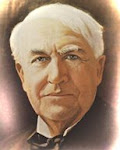 Bonn, Germany – UN climate chief Yvo de Boer today urged delegates to crucial negotiations starting today to take heed of yesterday’s Earth Hour call from hundreds of millions of people wanting decisive global action on climate change this year.
Bonn, Germany – UN climate chief Yvo de Boer today urged delegates to crucial negotiations starting today to take heed of yesterday’s Earth Hour call from hundreds of millions of people wanting decisive global action on climate change this year.The head of the UN Framework Convention on Climate Change (UNFCCC) had earlier received a symbolic blue Earth Hour ballot box of “votes for earth” from a group of German scouts.
Taking the ballot box into the opening session of the climate talks, de Boer told delegates from nearly 190 nations meeting to negotiate towards a new global climate agreement due to be decided in Copenhagen in December that they should heed the voices of millions.
"Around the world, millions of people in thousands of cities switched their lights off last
night in order to send a clear message that we must act on climate change," he said.
"Earth hour was probably the largest public demonstration on climate change ever. Its aim was to tell every government representative to seal the deal in Copenhagen.”
If concluded, a Copenhagen agreement would provide the basis for global action on climate change causing emissions past the 2012 expiry of the current – and clearly inadequate – Kyoto Protocol.
From the Sydney’s Harbour Bridge soon after WWF’s Earth Hour commenced to San Francisco’s Golden Gate Bridge shortly before it concluded, lights went out around the globe as hundreds of millions of people from around 4000 towns and cities in 88 countries voted for earth with their light switches.
“The world’s concerned citizens have given the negotiations an additional clear mandate,” de Boer said.
Throughout the session the blue box remained standing on the main negotiation table, visible to all delegates, observers and journalists from around the world.
.



Photos of the Sky Tower in Auckland prior to and during Earth Hour.
Time to act
“Earth Hour 2009 was an incredible success,” said WWF International Director General James Leape. “If you participated in Earth Hour, thank you, your participation made that success possible.
“But whether your participated or not, the work continues, because over the next six months, the leaders of the world will be deciding how they step up to meet this challenge, and we need, together, to make sure they do the right thing.
“Join with us to take the fight from Earth Hour to December when those leaders gather in Copenhagen to agree on a solution to Climate Change. Together, we can make sure this problem is met.”
India (and Bollywood) rate climate action a priority
“Climate Change is undoubtedly and regrettably, the biggest immediate long-term environmental challenge we face,” famed Bollywood actor and filmmaker Aamir Khan said in a statement leading up to the country’s participation in Earth Hour.
“A failure to come to sound policy outcomes on climate change will not only have a negative environmental impact but also social and economic consequences for all of us.”
The world’s second most populated country participated enthusiastically in Earth Hour, with official activities taking place in the cities of Delhi, Mumbai, Bangalore, Cochin, Thiruvananthapuram, Dehradun, Shimla, Chandigarh and Hyderabad as well as numerous smaller communities.
Private citizens, businesses and government bodies took part, with an order reportedly going out today from a government ministry in New Delhi that all of the city’s public landmarks and monuments in the area should switch off their lights for Earth Hour
Mumbai’s best known landmarks, the Reserve Bank and Air India buildings and the Indian Tourism Development Corporation’s flagship Ashok Hotel, went dark along with hundreds of other buildings across the city. Indian IT giants such as WIPRO and Infosys also joined in.

Earth Hour event at IHC, Delhi
Click http://www.flickr.com/photos/earthhour_global/sets/72157615780247025/show/ to see a slide show of Earth Hour' 09 around the globe.




























